
Several years ago, while the author was showing some Scottish and Irish friends round the town, having rambled on about the town’s history and tales of Dunball’s Treacle Mine, the Jam Factory, the famous Bridgwater Manchip, and finally, while passing the old Cake Mill, one remarked; ‘is everything in this town geared towards dessert?’ Of course the latter has nothing to do with ‘cake’ in that sense, but rather the pumice left over from crushing grain.
The Linseed Oil and Cotton Cake Mill on the north-west corner of the docks was founded in 1869 and the core of the present buildings dates to about then. Previously part of the site had been utilised as part of a brickyard to supply materials for the canal construction, which had ceased operation around 1859. A fragment of wall, part of an up draught brick kiln, stands in the west of the site.

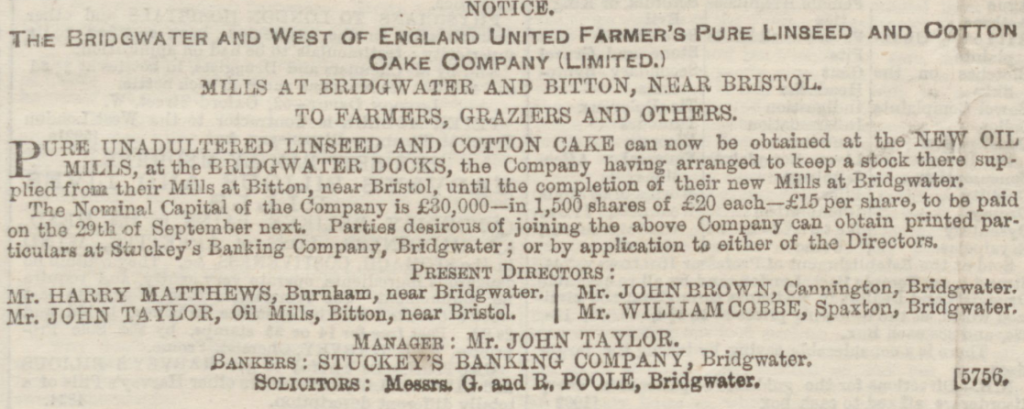
The purpose of the mill was to crush flax in order to extract linseed oil, which had a range of uses, including as a component of oils paints or as a wood preservative. The leftover flax mush, called cake, was used as a fertiliser and as animal feed. Initially there were fifteen workmen employed, but at the mill’s height of prosperity there were over seventy. Cottonseed was also imported, some coming from Egypt. In May 1878 a large crowd assembled to see the arrival of a 700 ton ship, the Abeona, arrive with such a cargo (Devon and Somerset News, 23 May 1878)
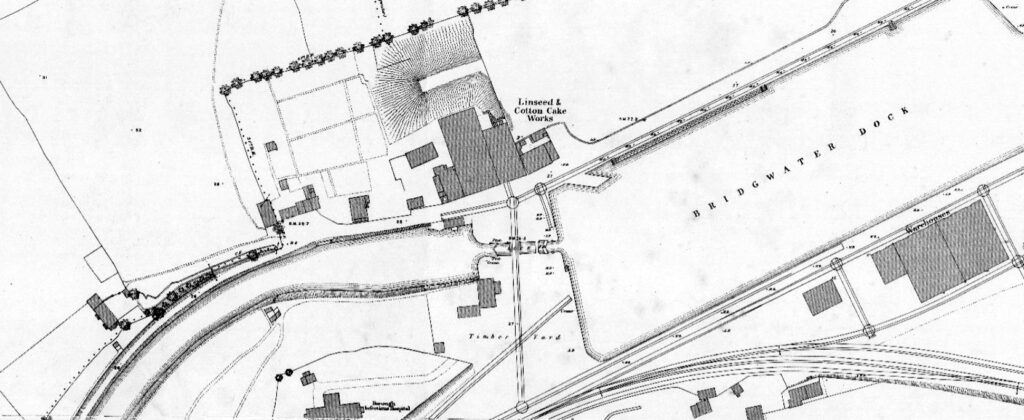
The company first traded under the name ‘the Bridgwater and West of England Farmers’ Pure Linseed and Cotton Cake Company Ltd’, but was later renamed as the ‘Bridgwater Oil Mills Ltd’. They were still trading under the old name as late as 1886. Either way, the company went into voluntary liquidation in 1891, with all debts and liabilities being paid off (Shepton Mallet Journal, 14 May 1886; Commercial Gazette (London), 7 January 1891; Weston Daily Press, 21 March 1914).
The new company that formed would be ‘Croad and Brown Ltd’. Brown was probably Edwin Brown JP, who lived in Hamp Green House. He died in 1937, aged 91 and was buried in the Wembdon Road Cemetery. By 1895 the directors of the company were Brown, along with J. and W.T. Bradford (Financial News, 30 April 1895).

A huge fire engulfed the mill on 26 February 1892, although luckily no one was injured and the business was insured. Today most residents of the area will recall several occurrences of fire there over the last few decades, most recently in January 2018. After the 1892 fire salvage was sold off by a firm called Toplis and Harding, including 300 tons of cottonseed and 100 tons of linseed, as well as salvaged machinery and ironwork (Renfrewshire Independent, 04 March 1892; Public Ledger and Daily Advertiser, 12 March 1892). The fire at least gave the company a chance to update the premises and machines.
In 1892 to 1895 Croad and Brown commissioned architect Basil Cottam to redesign the mill and in 1899 they asked for designs for new offices. They also commissioned new machinery from Rose Downs and Thompson Ltd of Hull, manufacturers of general engineering products, oil mill machinery and food processing equipment. The firm was taken over by the British Oils and Cake Mill Ltd in 1899. It was one of seventeen companies acquired at this time.

Mr Jon Bigwood kindly got in contact to share these documents relating to the building’s history:





Bridgwater historian Joyce Hurford’s mother worked in the mill when she was young: ‘they were not allowed to stop for lunch, so you took sandwiches with you but if you did not watch out the rats would run down and eat them’. The mill was taken over by Bowerings Provenders (animal feeds) by 1960, possibly soon after their mill in Moat Lane was destroyed by fire in August 1957.
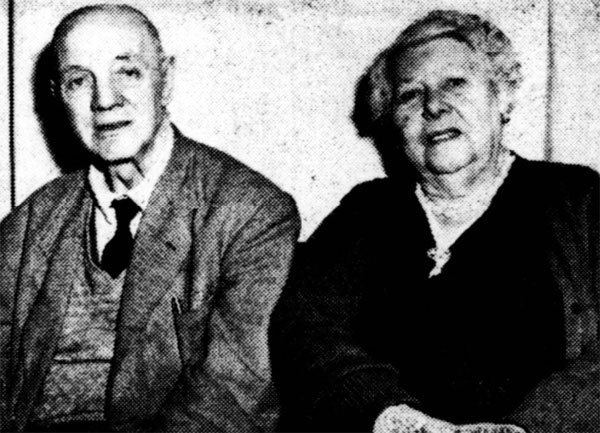

After this date the main block extended out to the great chimney. The little cottage to the east was still standing at that time. Bowerings, the current owners of the mill, started life as a bakery in North Street.


On 28 August 1973 there was another spectacular fire at the mill. The event was captured by Nigel Andrew Hunt (1947-2021), these pictures being kindly supplied by his brother Brian:







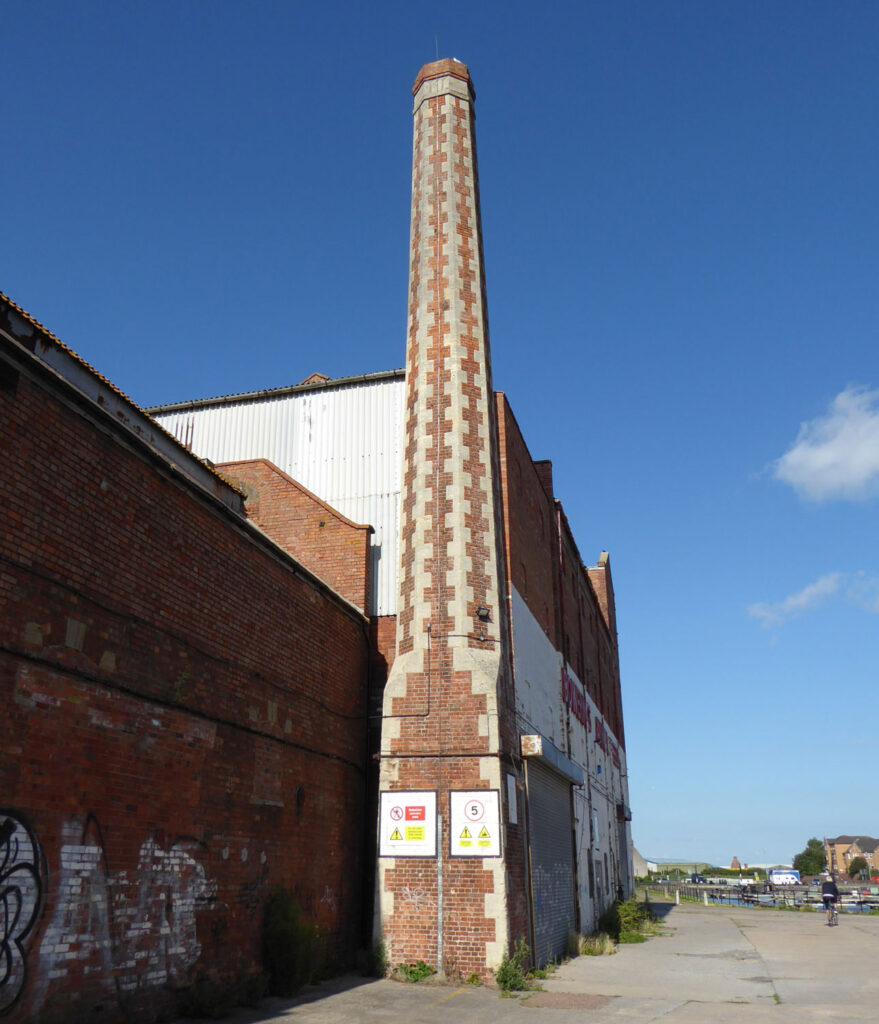
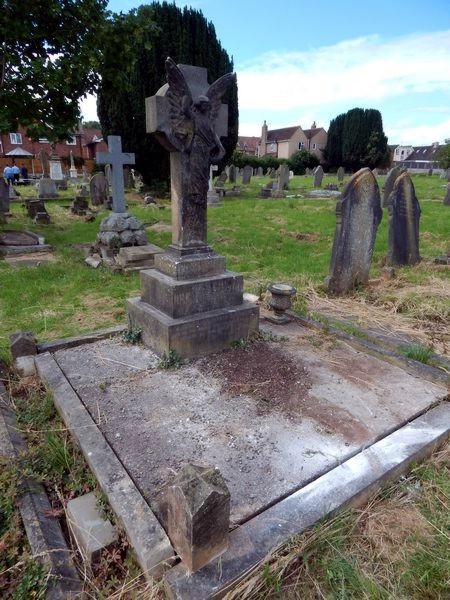
The memorial to the Bowering family, who founded the business, in the Wembdon Road Cemetery. The memorial was repaired for the Friends by Fine Memorials in 2016
For more information see:
Philip J. Squibbs and Jon F Lawrence, Squibb’s History of Bridgwater (Chichester, 1982)
Brian J Murless, Bridgwater Docks and the River Parrett (Bridgwater, 1983)
The Blake Museum, Bridgwater the Second Selection (Stroud, 2001)
Kelly’s Directory of Bridgwater and Neighbourhood, fourth edition (London, 1960)
SAVE Britian’s Heritage Building of the Month, July 2020.
M. Kerr-Peterson 7 February 2017, revised 30 October 2021, 24 November 2025.
With thanks to Clare Spicer and Jillian Trethewey for additional materials
